It was a surprise, since
the young American prospect was considered a player with good stamina
and has already earned a reputation for wearing down her opponents, not
vice versa.
After a first-round victory at the French Open, McHale felt particularly exhausted.
"I won 6-4 in the third
set, but I remember saying to my coach that I feel like I've just been
hit by a bus," the 21-year-old recalled.
At first she thought it
was a sinus infection. Then a couple of months later, following the
Olympic tennis event at Wimbledon, McHale picked up a stomach bug and
had to go to hospital. Her ordeal dragged on.
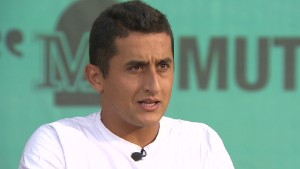 Nadal challenger makes a splash
Nadal challenger makes a splash
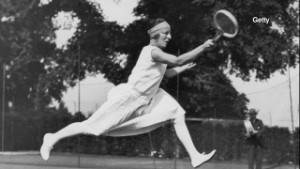 The first diva of women's tennis
The first diva of women's tennis
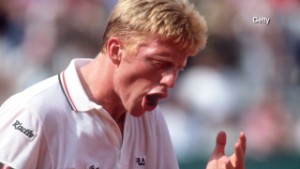 Beating the 'French Open curse'
Beating the 'French Open curse'
"I kept going back to the
doctors because I wasn't getting better," McHale said. "I was still
feeling very low on energy and they were like, 'No, you should already
be over the stomach virus.' So then they started doing more tests, and
that's when they found out what it was."
The diagnosis was
mononucleosis, a viral illness that can linger for weeks, months or even
years. It has earned the nickname of the "kissing disease" because it
can get passed from one person to another through saliva. Fortunately
for McHale, her bout was coming to an end.
McHale, though, isn't the
only tennis player in recent years to be afflicted with mono or the
name it's also known by, glandular fever.
Others on the list
Top men's players Roger
Federer, Andy Roddick, Robin Soderling, Mario Ancic and John Isner have
been struck down, while Heather Watson, like McHale a player with
promise, revealed she had mono in April.
Jarmila Gajdosova, another promising player on the women's tour, announced last week on Twitter that she had mono.
Soderling and Ancic
weren't as lucky as the likes of Federer, McHale and Watson, who hopes
to return to action at the French Open, which starts this weekend.
Indeed the severity of cases varies, as does an individual's capacity to
fight off and cope with infections.
Soderling, the French
Open finalist in 2009 and 2010, hasn't played since 2011 and it is
looking increasingly likely that he won't ever come back.
The Swede with the
massive forehand -- who handed Rafael Nadal his only defeat at Roland
Garros -- started to feel unwell in the spring of 2011 and later said it
was a mistake to compete at Wimbledon that year.
Ancic, hailed as a
potential winner at Wimbledon after reaching the semifinals in 2004,
attempted to play through his flu-like symptoms during a Davis Cup
series against Germany in 2007.
He said he felt so dizzy in his singles opener he missed a ball completely, but he still contested the doubles a day later.
He was ready to play the
deciding fifth rubber if needed, although with Germany already
clinching the tie he was replaced by a young Marin Cilic.
 French Open champs on the future
French Open champs on the future
 Sharapova prepares for Roland Garros
Sharapova prepares for Roland Garros
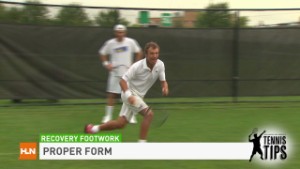 Tennis Tips: Recovery footwork
Tennis Tips: Recovery footwork
"God saved me," Ancic, known for his work ethic and willingness to play through injuries, said in an interview in 2007.
Ancic re-emerged on the tour but was never the same and a teary-eyed Croatian had to retire two years ago aged 26.
Andy Murray, the current
world No. 2, feared he had mono four years ago, and it's an illness
he's still wary of, telling the Daily Telegraph in March: "You can get
run down and end up missing two or three months of the year because of
an illness.
"Your immune system gets
run down and then you lose weight. It's happened with a lot of guys
with glandular fever the last few years so it's something everyone has
to look into."
Continuous travel, training
Former pro Justin Gimelstob isn't surprised that tennis players are susceptible.
The players have to, at times, switch continents on a weekly basis, and they travel 10-11 months in a year.
Unlike golf, cricket or
Formula One, others sports that require continual global travel, the
players also push themselves to the limit physically.
The career of Gimelstob,
who now commentates and serves as a player representative on the ATP
World Tour's board of directors, was blighted by a back injury.
"I think that's the
thing people don't understand -- the heightened intensity does damage to
your body, immune system, energy levels, on the fitness of your
muscles, ligaments, tendons," Gimelstob said.
"It's just a very tough
sport. I truly believe that Nadal, Murray, (Novak) Djokovic and Federer,
these guys aren't only the best tennis athletes in the world, they are
some of the best athletes in the world.
"There's a whole culture of being tough and strong and pushing through pain and being a warrior.
"But I can tell you
right now at 37 years old walking my dog, my body feels the brunt of
probably doing a lot of things and pushing through barriers I probably
shouldn't have. That's the product of an individual sport."
At first Leslie Findley,
a consultant neurologist in England who has treated marathon runners,
footballers and tennis players with mono, said it was a "myth" that
those involved in tennis are more vulnerable than other athletes.
But he subsequently acknowledged that when factoring in their travel, the severity of the illness can intensify.
"We know people with fatigue illnesses related to the effects of viruses travel badly," he said.
"If you take someone
with a chronic fatigue syndrome and stick them on an airplane at
(London's) Heathrow to the United States they'll do an eight-hour
flight. That can have a devastating effect on them for days afterwards."
Preventing mono can be
difficult, but Findley said it's important that players heed warnings.
If they suddenly develop a cold, fever, sore throat or stomach issues,
it's vital to rest instead of continuing to train and play matches.
Stopping not easy
As Gimelstob pointed out
and Findley knows through his own experience in working with sportsmen
and women, that isn't always easy.
"When you and I have the flu, we go to bed and within a week or two we'd be back to normal," Findley said.
"Why these people get
symptoms that go on for weeks, months and years is usually because --
and I'm now generalizing -- they don't stop when they have the first
symptoms and tend to push through, and they're under stress."
Diagnosing mono isn't simple, either, said Findley.
He said there is a lack
of specialists and that doing a battery of tests at the outset may not
be efficient. He will usually spend nearly two hours talking to patients
in a first consultation before making a clinical diagnosis.
"Then there are a
limited number of blood tests that need to be done to make sure there is
nothing else contributing to it," Findley said.
The women's tennis tour
said in an email that player health and well being was a "priority." But
the age of many of its pros is another reason why tennis players would
appear to be at risk.
"Mononucleosis most
commonly occurs in people between the ages of 15 and 24, which is our
athlete population," said Kathleen Stroia, senior vice president, sport
sciences and medicine & transitions, with the WTA.
The men's tour said in an email that mono "has not been of unusual concern for the players or the ATP Medical Services."
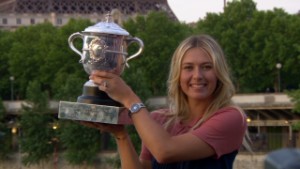 The story behind Sharapova's success
The story behind Sharapova's success
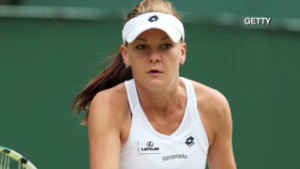 Radwanska: Playing Serena was tough
Radwanska: Playing Serena was tough
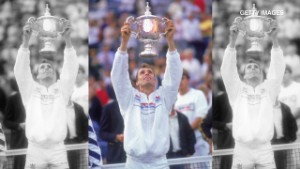 Ivan Lendl: There are plenty of champs
Ivan Lendl: There are plenty of champs
"Professional athletes
are not immune to illnesses which affect the general public in general,"
said Gary Windler, medical advisor to the ATP World Tour.
"While we are concerned
about and take all injuries and illness seriously, and although some
high profile players have suffered from glandular fever in recent years,
the incidence of this particular illness amongst our players in general
has not been unusually high."
McHale didn't think her tour needed to do more to help players.
"I think we're probably more susceptible to getting it because our bodies are more run down from traveling so much," she said.
"Also sometimes I take a
water bottle -- they all look the same -- to the court and all of a
sudden I'm like, 'This wasn't my water bottle.' Sometimes it gets
transferred like that.
"I know a lot of my
friends have gotten it. They're not athletes. For them it wasn't a big
issue. It's amplified when you're an athlete."
Tough comeback for McHale
Her road back hasn't been smooth.
McHale, like others
before her, didn't stop playing for a while. But after losing five
straight matches, she finally decided to sit out the remainder of 2012
and not contest the European indoor swing. The losing streak rose to
eight by the time this January's Australian Open ended.
As high as No. 24 in the world last summer, her health issues largely contributed to her ranking sliding to 55th.
She has resumed training
fully and played for nearly three hours against 2012 French Open
finalist Sara Errani in Rome on Wednesday but knows she must be careful.
"They did tell me
there's a chance I could get a relapse, so I have to take it easy if I'm
feeling extremely exhausted," she said. "But I think I'm past that
point. I don't feel any side effects of what I had. I feel like I'm
fully over it now. I was lucky my case wasn't extremely bad like some
others."

No comments:
Post a Comment